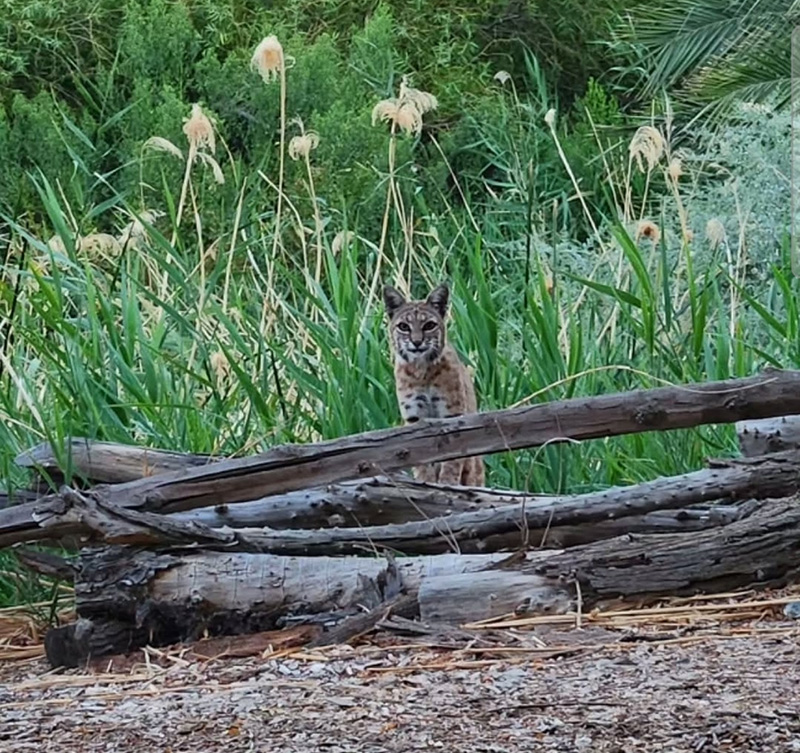By Janet Foley
Wanting to help, and not hurt, wildlife, my student, who will be nameless, decided that she knew all about trapping bobcats. She had no prior experience with bobcats, but abundant confidence, and she felt that the tried and true method, consisting of sequestering a pigeon behind a screen in a live trap, was going to be way too stressful for the pigeon. And of course, sometimes the pigeon doesn’t quite survive the bobcat in the trap, even if the screened off area is meant to be safe for her (the pigeon). So the student collected leftover chicken feathers and such and created a kind of fake pigeon, which she installed in the back of bobcat traps. The bobcats were not fooled.
The student pivoted, not to live pigeons, but to bobcat poo. She was trying to study an epidemic of mange caused by the feline mite Notoedres cati, which sometimes causes a bobcat or housecat to lose all its fur, its skin to become wrinkly and to swell, the cat to scratch and suffer, and sometimes even die. The “good” news is that, because cats groom so extensively and because there are so many mites in infested cat skin, quite a lot of mite parts and mite DNA end up in the cat’s feces. So the student was able to do a great study even without handling a bobcat.
What she knew even without capturing them is that they are indeed secretive and they can be all around us without ever being seen. I venture to say that most people who take the Shoshone walking trail around the pupfish and vole pools and marsh, respectively, have never seen the bobcats that share the marsh. We’ve been lucky to capture them on remote cameras.
Bobcats are quite resilient across different habitats. So even though Student was working in the San Francisco Bay Area, there also are a ton of bobcats in and around wild-ish remaining fragments in Los Angeles. They’re present in fragments up and down the Central Valley, and by present, in a few acres there can be more than a few bobcats, hunkered down in the brush and only known to be there because of “real” trapping studies and camera studies.
So what do they do in Shoshone and Tecopa? They haven’t been studied extensively in this habitat, but we can infer that they prefer live food and will capture and eat rodents, birds, and insects. Sometimes they will eat fruits. They’ll hide during the heat of the day but are not threatened especially by the heat regime that Amargosa-ans at least tolerate. They are threatened by coyotes and some other predators, however, so they try to stay under the radar. Given that they likely need to drink free flowing water, in our area they can take advantage of the springs and pools that dot the landscape, but they’ll do it in evening and night, to beat the heat and to stay hidden. Females stay put in their territory, but males move around among female sites. They know all about where each other is by scent marking. The females have one litter of about 3 kits per year.
I have worked in places where bobcats are a little more visible, even during the day, and I speculate this may be where they are relatively well-protected from dogs. As you likely know, the Amargosa coyote population is robust, so this will limit bobcat visibility. But please know that they share this precious space with us and wish them well!

